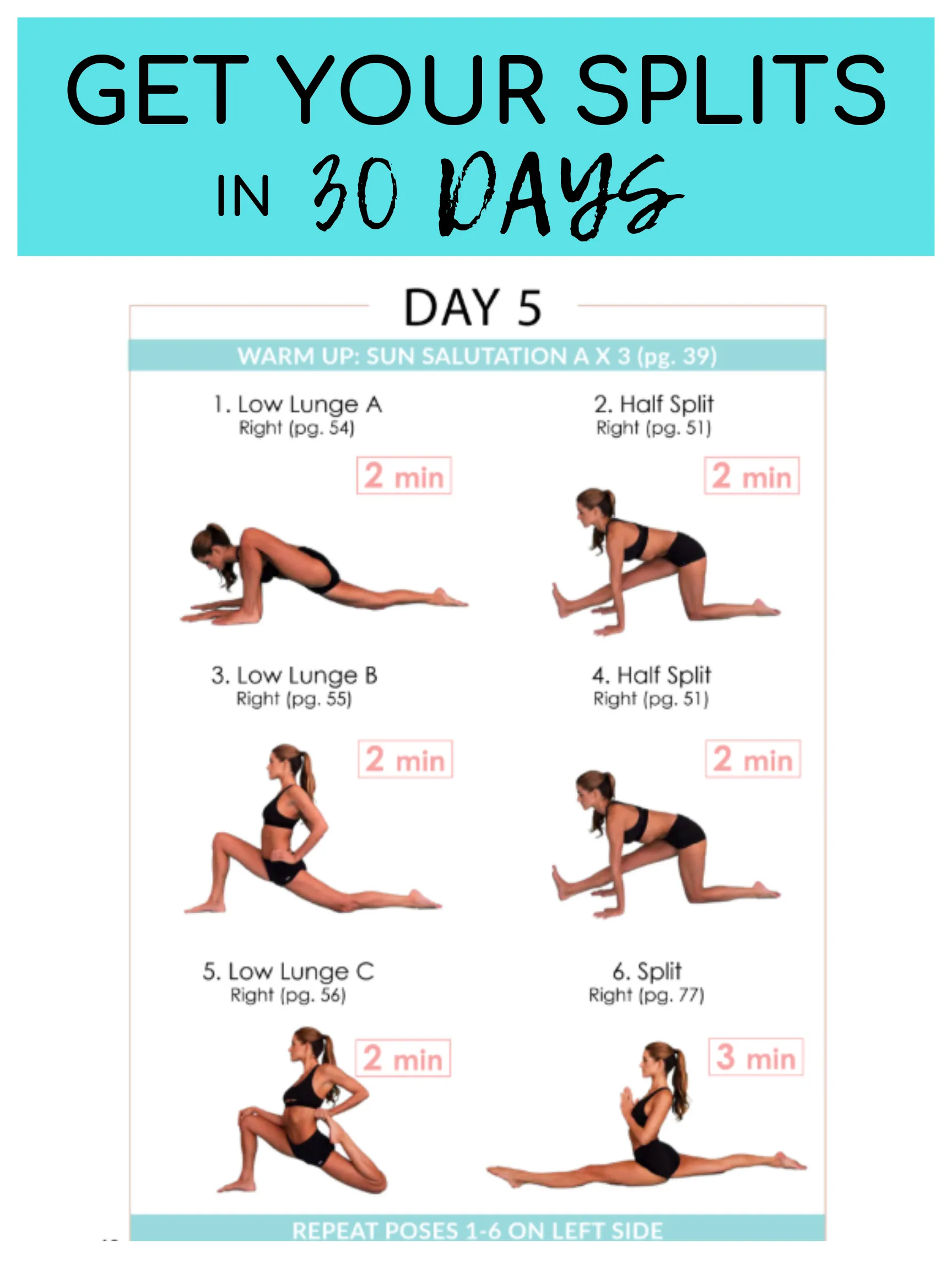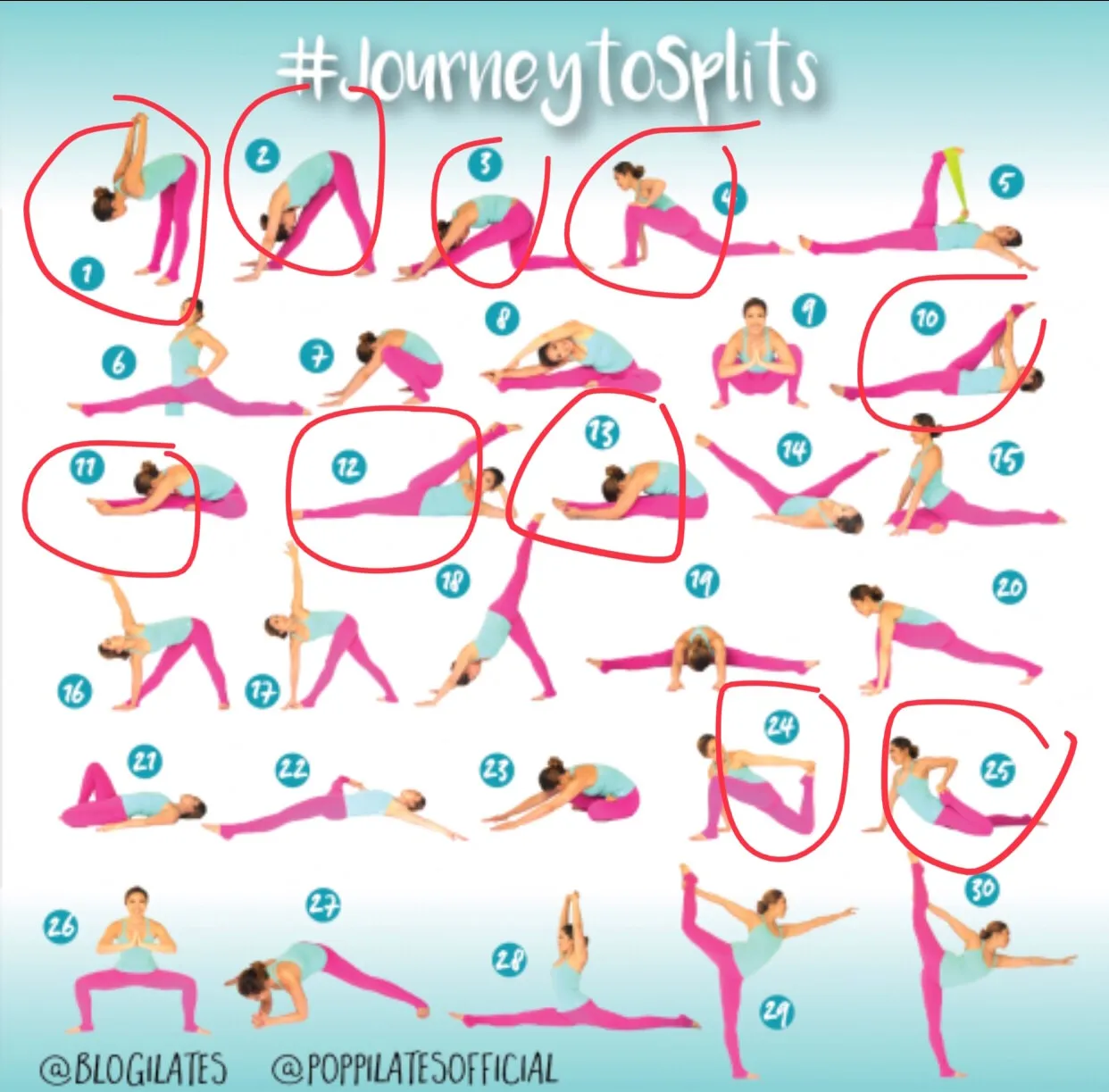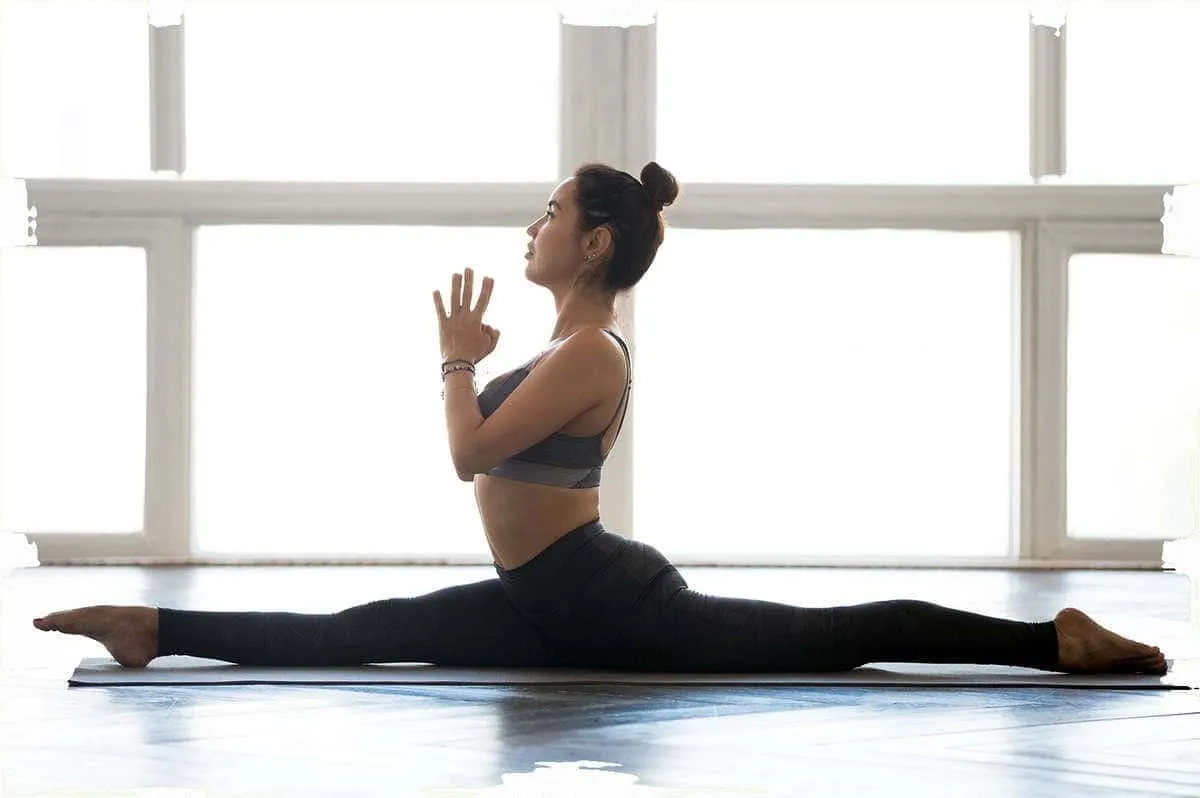Mastering the splits can seem like a daunting task, but it’s an incredible feat of flexibility that can open up a world of movement possibilities. Whether you're a dancer, gymnast, or just someone looking to improve their overall flexibility, understanding the splits is essential. The splits involve straddling your legs in opposite directions, creating a straight line with your body. They not only showcase flexibility but also require strength, balance, and proper technique. In this guide, we’ll explore what it takes to achieve the splits, including the necessary stretches and techniques to help you get there safely and effectively.
Benefits of Doing the Splits

Achieving the splits offers a plethora of benefits that extend beyond just showing off your flexibility. Here are some compelling reasons to incorporate splits training into your routine:
- Improved Flexibility: Regular practice of the splits helps to lengthen and stretch your muscles, significantly enhancing your overall flexibility.
- Enhanced Strength: While it may seem counterintuitive, holding the splits requires muscular strength, especially in your hip flexors, quadriceps, and glutes.
- Better Balance and Coordination: The splits promote body awareness and control, leading to improved balance and coordination in various physical activities.
- Injury Prevention: Increased flexibility helps to reduce the risk of strains and injuries, especially in high-impact sports or activities.
- Improved Posture: Stretching your hip flexors and hamstrings through splits can lead to better posture and spinal alignment.
- Enhanced Athletic Performance: Many sports, such as dance, martial arts, and gymnastics, benefit from the added flexibility and strength that come with mastering the splits.
Incorporating splits training into your routine not only enhances your physical capabilities but can also boost your confidence as you achieve new milestones in your flexibility journey.
Also Read This: How to Download PSD Files from Behance
Essential Preparatory Stretches

Before diving headfirst into the splits, it’s crucial to prepare your body with some essential stretches. These stretches warm up your muscles and increase flexibility, making your journey to the splits smoother and safer. Here’s a list of some must-do stretches:
- Hamstring Stretch: Sit with one leg extended and the other bent, reaching toward the toes of your extended leg. Hold for 20-30 seconds on each side.
- Hip Flexor Stretch: In a lunge position, lower your hips forward to stretch the hip flexors of the back leg. Hold for 20-30 seconds on each side.
- Quadriceps Stretch: Stand on one leg and pull your other foot towards your glutes. This stretch helps to loosen the front thigh muscles. Hold for 20-30 seconds on each side.
- Butterfly Stretch: Sit with your feet together and knees bent out to the sides. Gently press down on your knees for a deeper stretch. Hold for 30 seconds.
- Pigeon Pose: From a plank position, bring one knee forward towards your wrist and extend the other leg back. This opens up the hip area. Hold for 30 seconds on each side.
Incorporating these stretches into your routine will not only prepare your body for the splits but also enhance your overall flexibility. Remember to breathe deeply and listen to your body—never push into pain. Consistent practice will yield fantastic results!
Also Read This: Why Creative Agencies Depend on Imago Images for Their Campaigns
Step-by-Step Guide to Achieving the Splits

Ready to take the plunge and work towards achieving the splits? Here’s a simple, step-by-step guide to help you get there safely and effectively. Remember, patience is key!
- Warm Up: Start with a 5-10 minute warm-up. Light jogging or skipping can get your blood flowing.
- Perform Essential Preparatory Stretches: As detailed above, spend at least 15-20 minutes on your preparatory stretches.
- Start with a Lunge: Step into a lunge position, ensuring your front knee is directly above your ankle. Keep your back leg straight and hold for 20-30 seconds.
- Gradually Lower into the Splits: Slowly slide your front foot forward and your back foot backward. Go as far as you can without forcing it. Hold this position for about 30 seconds.
- Use Props if Needed: If you can't reach the floor, use yoga blocks or cushions for support. This will help ease the tension on your muscles.
- Hold and Breathe: As you reach your maximum stretch, focus on your breathing. Inhale deeply and exhale slowly, allowing your body to relax into the stretch.
- Cool Down: After your practice, cool down with gentle stretches to prevent soreness. The butterfly stretch again works wonders here!
Keep in mind that everyone's body is different, so progress may vary. Celebrate your small victories along the way, and remember that consistency and perseverance are your best friends on this journey!
Also Read This: How to Build a Behance Portfolio That Showcases Your Best Work
Common Mistakes to Avoid
When it comes to mastering the splits, it's easy to fall into some common traps that can hinder your progress or even lead to injuries. Let's take a look at these pitfalls so you can steer clear of them!
- Skipping Warm-ups: Always begin with a thorough warm-up. Cold muscles are more prone to injury, so a few minutes of light cardio or dynamic stretching can make a huge difference.
- Pushing Too Hard: It’s tempting to go all out in your quest for flexibility, but pushing your body beyond its limits can lead to strains. Listen to your body and ease into stretches gradually.
- Neglecting Strength Training: Flexibility and strength go hand-in-hand. Focusing solely on stretching can result in imbalances. Incorporate strength exercises for the muscles involved in the splits.
- Inconsistent Practice: Flexibility takes time and consistency. Make stretching a regular part of your routine—aim for at least three times a week.
- Incorrect Technique: Performing stretches incorrectly can not only slow progress but can also result in injury. Consider working with a qualified instructor or using online resources to ensure you’re using the right form.
By avoiding these common mistakes, you’ll be on a smoother path to achieving your splits. Remember, patience is key!
Maintaining Flexibility and Preventing Injuries
Once you've achieved your splits, the next challenge is maintaining that flexibility while keeping injuries at bay. Here are some effective strategies to help you stay limber and safe:
| Strategy | Description |
|---|---|
| Regular Stretching Routine | Continue to stretch regularly, even after achieving your splits. Aim for a mix of static and dynamic stretches to keep your muscles flexible. |
| Listen to Your Body | Pay attention to any signs of discomfort or pain. If something doesn’t feel right, modify or skip that stretch to avoid injury. |
| Cross-Training | Engage in other forms of exercise, such as yoga or pilates, to promote overall flexibility and strength without overworking the same muscle groups. |
| Rest and Recovery | Don’t underestimate the power of rest. Give your muscles time to recover, especially after intense stretching sessions. |
| Stay Hydrated | Proper hydration supports muscle function and recovery. Drink plenty of water to keep your muscles happy and healthy. |
By implementing these strategies, you’ll not only maintain your newfound flexibility but also enhance your overall well-being. Flexibility isn’t just about achieving the splits; it’s about creating a sustainable practice that keeps your body healthy and injury-free!